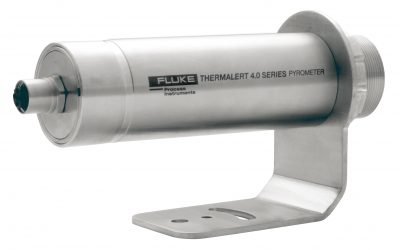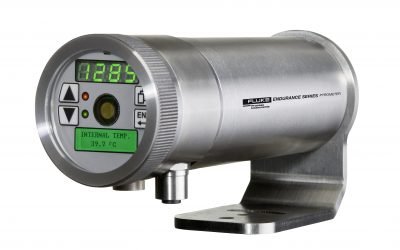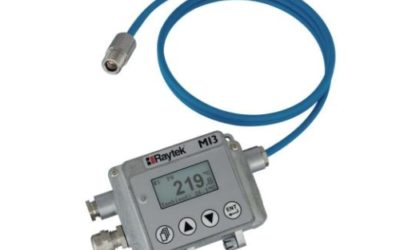A pyrometer is a device used to measure high temperatures without making direct contact with the object being measured. It is specifically designed to measure the thermal radiation emitted by the object, and is critical for many industrial thermal processes. The word “pyrometer” comes from the Greek words “pyro” (meaning fire) and “meter” (meaning measure).
Pyrometers work based on the principle of detecting and analyzing the infrared radiation emitted by objects at high temperatures. They can measure temperatures ranging from a few hundred degrees Celsius to several thousand degrees Celsius.
There are different types of pyrometers, including optical pyrometers and infrared pyrometers. Optical pyrometers use the visible light spectrum to estimate the temperature of the object by comparing its color to a known temperature scale. Infrared pyrometers, on the other hand, use specialized sensors to detect and measure the infrared radiation emitted by the object. They then convert this radiation into temperature readings.
Pyrometers are commonly used in various industries and applications where non-contact temperature measurement is required, such as in steel production, glass manufacturing, metalworking, and furnace monitoring. They provide a quick and accurate way to measure temperatures without physically touching the objects, ensuring safety and efficiency in temperature control and monitoring processes.
Q. What is the difference between single-color & two-color (ratio) pyrometers?
A. A single-color pyrometer functions like a camera–if the lens is partially obstructed, the resulting image will be underexposed on the film. When an infrared pyrometer “looks” at an object, it measures the intensity of the radiant energy from the object within its Field-of-View (FOV). So, for a single-color pyrometer, if any of the following happens, it will cause the reading to be inaccurate similar to a camera:
- A partial obstruction in the FOV
- The measured object doesn’t completely fill the FOV
- The IR energy emitted by the object is attenuated by something (e.g. smoke, moisture, dust, etc) constantly or intermittently before it reaches the sensor
Sometimes these things are inevitable–the object does not fill the FOV, an obstruction cannot be moved or the smoke or dust will always be present in the process area which will cause the reading to be incorrect.
A two-color (ratio) pyrometer can usually solve these problems. Some partially obstructed targets (up to 95%) can be accurately measured with a two-color pyrometer. It consists of two single-color detectors in the same package. Using two detector layers, a two-color pyrometer measures the target at two separate wavebands simultaneously. The signals from the two detectors are then processed as a ratio. The calibration curve is based on the ratio of the two signals, which will be very accurate as long as the partial obstruction or attenuation affects each of the wavelengths by an equal amount. If the signal loss in each waveband is the same, then a two-color pyrometer reports an accurate temperature.
Q. Can I look through a quartz window with my 8-14 μm Pyrometer?
A. No. At low temperatures (in the 8-14 μm wavelength range), it is necessary to use a special IR transmissive material such as Germanium, Amtir, or Zinc Selenide. At high temperatures (typically in the 1 um wavelength range), the material most often used is quartz glass.
Q. What wavelength should I use for measuring the temperature of glass?
A. It is recommended to use a sensor with a 5 μm wavelength range for surface temperatures, or 7.9 μm wavelength range for surface temperatures of very thin sheets or low temperatures. Since glass is a poor conductor of heat and can change surface temperature rapidly, a pyrometer with a short response time is recommended. When taking measurements below the surface, a sensor for 1.0, 2.2, or 3.9 μm wavelength should be used.
Q. What is the best single color wavelength for metals and 1200°F or above?
A. The optimal wavelength for high temperatures in the case of metals is at around 0.8 to 1.0 μm. Wavelengths of 1.6, 2.2, and 3.9 μm are also possible. Good results can be achieved using two-color (ratio) pyrometers in cases (e.g. heating processes) where measurement is to take place across a relatively wide temperature range and the emissivity changes with the temperature.
Explore our selection of high-quality pyrometers and unlock unparalleled temperature control capabilities for your industrial needs.



